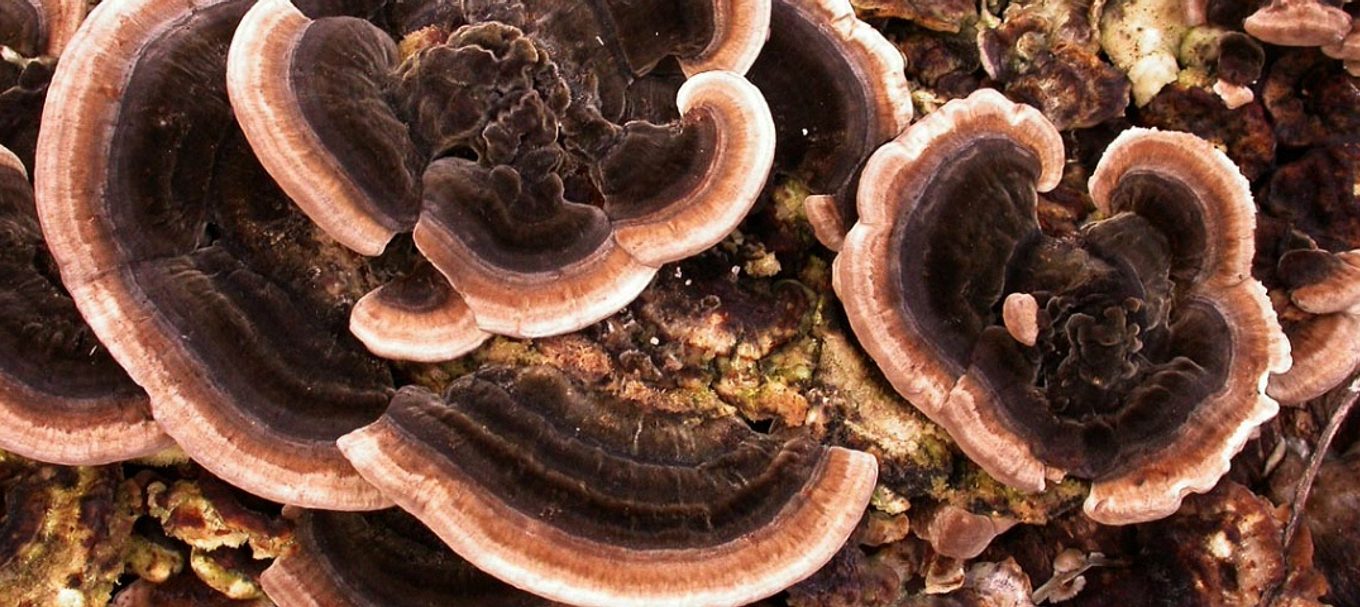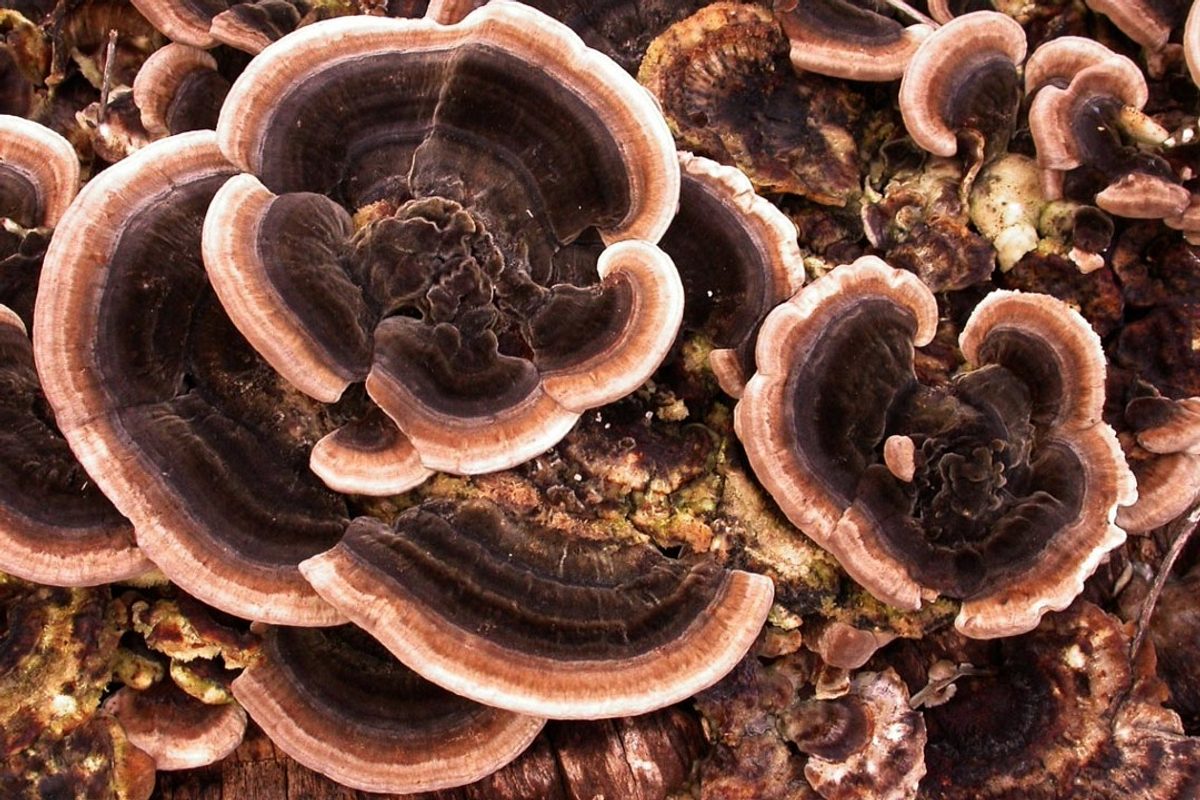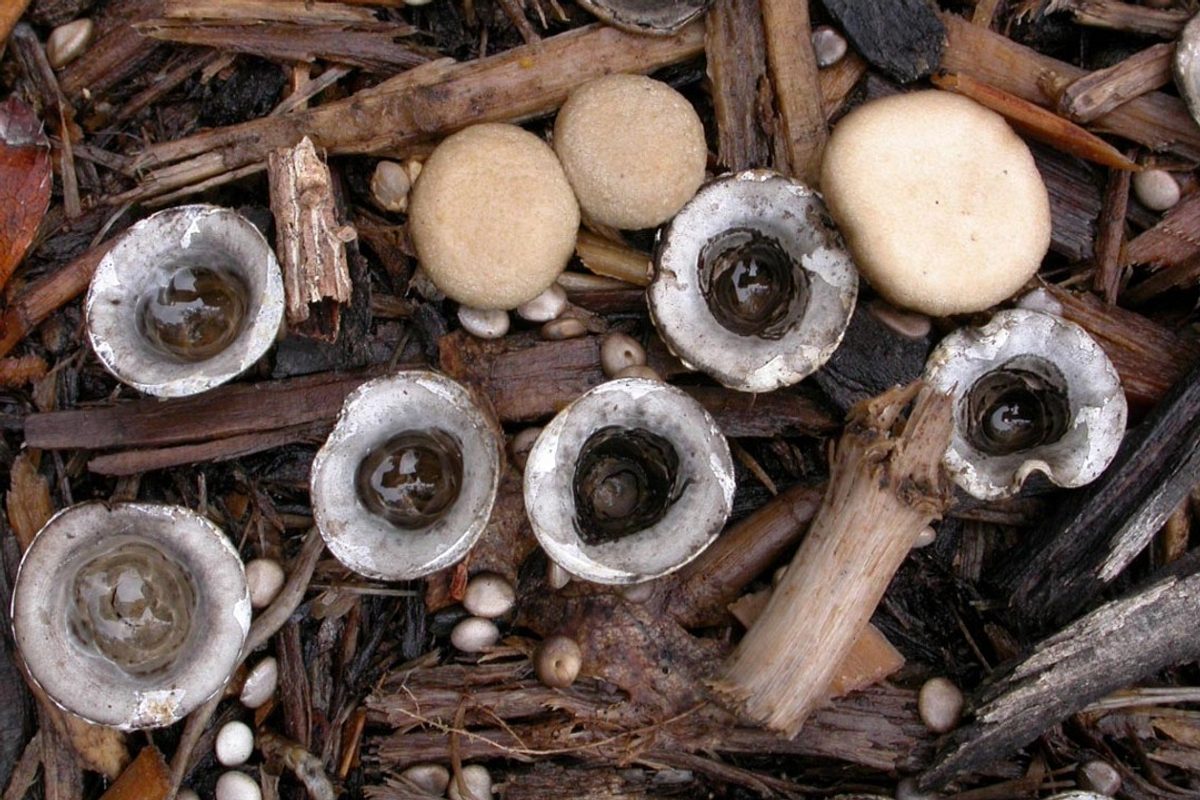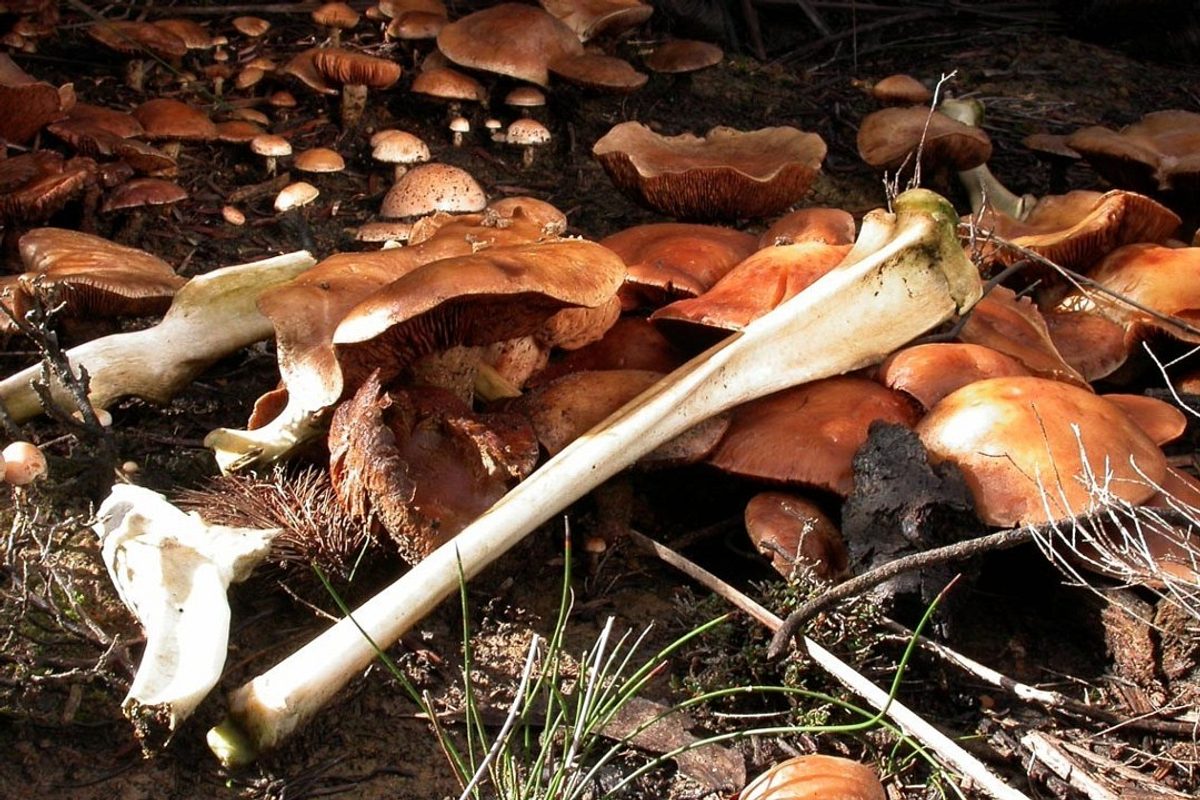
5 more fungi to look for in the Adelaide Hills
If you’ve got a keen eye for spotting fungi, you might have already encountered the collared earth star, thejelly baby, or some of the other weird and wonderful types of fungi we showcased in the first part of this series.
But don’t despair, there’s plenty more where those came from.
Here are five you might spot around the Adelaide Hills this time of year:
1. Turkey tail (Trametes versicolor)

Turkey tail fungi come in a variety of colours, and are often striped. They are shelf-like structures and can befound growing on wood of all descriptions, sometimes even fence posts.
Some of the brown turkey tail varieties can actually look a bit like wood, so they blend in with their surrounds andcan be hard to spot.
2. Bird’s nest (Cyathus olla)

This intriguing greyish yellow fungus resembles a littlenest filled with eggs. These egg-like structures are called peridioles, and are actually packets of microscopicspores.
Raindrops splash the ‘eggs’ out of the nest so the spore packets are spread. The spores germinate andeventually new ‘nests’ may be produced.
3. Green skinhead (Cortinarius austrovenetus)

Green is a rare colour for fungi. So with its green-coloured top or cap, the green skinhead is somewhat unusual.
It’s known as a gilled fungus, because of the plate-like structures (gills) on the underside of its cap wherethe spores are produced.
Green skinheads are mycorrhizal, which means they have an essential relationship with the plant they grow on. Thefungus collects nutrients and water which are then used by the plant, and the plant provides energy to the fungusin the form of sugars.
4. Ghoul fungus (Hebeloma aminophilum)

Do you think ghoul fungussounds creepy? Anything that grows on or next to rotting flesh or bones is bound to seem that way.
Not only will ghoul fungus grow on something dead, it can also be found along areas where people have urinated.Charming. In fact, the ‘aminophilum’ part of this species’ name actually meansammonia-loving.
Ghoul fungi often grow in a mass and can reach a height of about 12 centimetres.
5. Pixie’s parasol (Mycena interrupta)

Pay close attention to tree trunks and logs to see if you can spot this species. It’s uncommon in SouthAustralia, so if you find one, count yourself lucky!
With a blue cap perched on a white-coloured stem, pixie’s parasols look as pretty as they sound. This speciesis saprotrophic.
Here’s what you’ve found
Check out this selection of fungi found by park-goers in our national parks, including at Morialta, Cleland and Scott Creek conservation parks.
![(Images courtesy of: [top left to bottom right] Rosemary Goland, Bridgette Doudy, Bridget Fox, Bridgette Doudy,
Southern Ocean Retreats, Cindy Leary, Adam (jermin8), Sarah Bray, Sarah Bray, Sarah Bray, Sarah Bray, Sarah
Bray).](https://cdn.environment.sa.gov.au/img/eyJidWNrZXQiOiJlbnZzYS1idWNrZXQiLCJrZXkiOiJlbnZpcm9ubWVudC9nb29kbGl2aW5nL2ltYWdlcy9mdW5naV9jb21waWxhdGlvbl9waWMuanBnIiwiZWRpdHMiOnsianBlZyI6eyJxdWFsaXR5Ijo4MiwicHJvZ3Jlc3NpdmUiOnRydWUsInRyZWxsaXNRdWFudGlzYXRpb24iOnRydWUsIm92ZXJzaG9vdERlcmluZ2luZyI6dHJ1ZSwib3B0aW1pemVTY2FucyI6dHJ1ZX0sInJlc2l6ZSI6eyJ3aWR0aCI6MTIwMCwiaGVpZ2h0IjoxNTk5LCJmaXQiOiJjb3ZlciJ9LCJzaGFycGVuIjp0cnVlfX0=)
Note: It is prohibited to take fungi (including mushrooms) from national parks and gardens for the health and safety of the public.
You’ll find our five featured fungi plus many others in theFungiof the Adelaide Hills identification chart, produced by the Natural Resources Adelaide andMount Lofty Ranges’ Natural Resource Management Education team and the Adelaide Fungal Studies Group. Formore in-depth information, check outBruce Fuhrer’sbook Fungi, or the field guide,Fungidown under.
(Main image courtesy of David Catcheside)
This story was originally posted in August 2017





